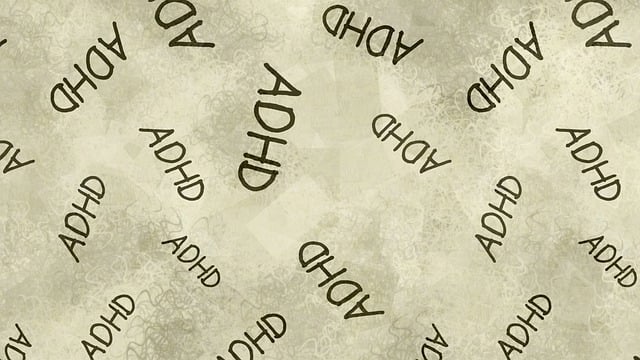Developing Effective Marketing Strategies for SDDT Apps: A Comprehensive Guide
Mental health disorders like Superior Dissociative Disorder (SDD) affect millions globally, and targ…….
In the complex realm of mental health treatment, Superior Dissociative Disorder Therapy (SDDT) emerges as a specialized approach designed to address a profound psychological phenomenon—dissociation. This article delves into the intricacies of SDDT, exploring its role in helping individuals regain control and integration of their thoughts, feelings, and memories. By examining various aspects, from its theoretical foundations to global implementation, we aim to provide a comprehensive understanding of this transformative therapy. Readers will gain insights into the impact, challenges, and future potential of SDDT, highlighting its significance in enhancing well-being worldwide.
Superior Dissociative Disorder Therapy is an advanced therapeutic approach tailored for individuals suffering from dissociative disorders, a group of mental health conditions characterized by a disconnection from reality or from aspects of oneself. SDDT focuses on helping patients integrate fragmented psychological experiences and restore a sense of coherence in their lives. The core components include:
The concept of dissociation has been recognized for centuries, with early case studies dating back to the 19th century. However, systematic therapy targeting dissociation emerged in the late 20th century. SDDT specifically gained prominence in the mid-1990s as a specialized form of treatment, built upon foundational work by pioneers in dissociative psychology. Its significance lies in its ability to:
SDDT has transcended geographical boundaries, finding its place in various healthcare systems worldwide. Key trends shaping its global impact include:
| Region | Trends | Impact |
|---|---|---|
| North America | Widespread adoption in specialized clinics and hospitals. | High success rates reported, leading to improved patient outcomes. |
| Europe | Integrated into national healthcare systems, with dedicated dissociative disorder centers. | Increased accessibility for patients, contributing to better mental health outcomes. |
| Asia | Growing interest in cultural adaptations of SDDT to suit diverse populations. | Potential for broader reach, considering unique psychological and social contexts. |
| Middle East | Limited availability but growing awareness among mental health professionals. | Encouraging early adoption to address emerging trends in dissociative disorders. |
The global mental health market, valued at USD 345 billion in 2021, presents a significant opportunity for SDDT. Within this market, the dissociative disorders segment is expected to grow at a CAGR of 7.8% from 2022 to 2029 (Grand View Research). This growth is attributed to increasing awareness, rising prevalence of traumatic experiences, and expanding healthcare accessibility.
Private equity firms and venture capital investors have shown growing interest in mental health startups, including those specializing in dissociation treatment. Funding for SDDT-related initiatives focuses on:
SDDT contributes to economic systems by:
Technology plays a pivotal role in modernizing SDDT and expanding its reach:
These advancements enhance accessibility, convenience, and customization of SDDT, potentially improving treatment adherence and outcomes.
The landscape of policy and regulation significantly influences the practice of SDDT:
Despite its potential, SDDT faces several challenges:
Strategic Solutions:
Patient Profile: Sarah, a 32-year-old woman, sought treatment for chronic dissociation stemming from childhood sexual abuse. She experienced frequent identity shifts and episodes of depersonalization.
Treatment Approach: SDDT was tailored to address her specific needs, including:
Outcomes: After 12 months of treatment, Sarah reported significant improvements:
Patient Profile: David, a 45-year-old man, was diagnosed with dissociative identity disorder (DID) after years of unexplainable behavior changes. He had multiple personality states with distinct memories and identities.
Treatment Approach: SDDT focused on:
Outcomes: Within 18 months, David experienced remarkable changes:
The future of SDDT holds immense potential for growth and innovation:
Superior Dissociative Disorder Therapy represents a powerful tool in the mental health arsenal, offering hope and healing to individuals struggling with dissociation. This article has provided a comprehensive overview of SDDT’s history, global impact, economic considerations, technological advancements, policies, challenges, and successful applications. As research continues to evolve and technology advances, SDDT is poised to play an increasingly vital role in improving mental health outcomes worldwide.
Q: What is dissociation, and how does it differ from ordinary daydreaming or relaxation?
A: Dissociation is a complex psychological phenomenon where an individual feels detached from their thoughts, feelings, memories, or surroundings. It differs from regular daydreaming or relaxation as it involves a profound sense of disconnection, sometimes lasting for extended periods. Ordinary relaxation focuses on calming the mind and body, while dissociation can lead to altered identities and fragmented memories.
Q: Who can benefit from SDDT?
A: SDDT is beneficial for individuals diagnosed with dissociative disorders, such as Dissociative Identity Disorder (DID), Dissociative Amnesia, or Depersonalization/Derealization Disorder. It can also assist those experiencing complex trauma, chronic stress, or dissociation related to neurological conditions.
Q: How long does SDDT typically take, and what is the success rate?
A: The duration of SDDT varies depending on the severity of symptoms and individual progress. On average, treatment plans last 12-18 months. Success rates are promising, with studies showing significant improvements in dissociation symptoms, quality of life, and overall functioning.
Q: Can SDDT be done remotely, and is it as effective as in-person therapy?
A: Yes, SDDT can be delivered remotely through telehealth platforms, making it accessible to individuals in rural or underserved areas. Research suggests that remote SDDT can be highly effective, but in-person sessions offer unique benefits, such as intensive integration work and building therapeutic alliances.
Q: What are some signs that someone might need professional help for dissociation?
A: If you or someone you know experiences frequent feelings of detachment from reality, altered identities or memories, chronic depersonalization, or episodes of disassociation lasting over a month, it’s crucial to seek professional help. These could be indicators of a dissociative disorder, requiring specialized treatment.

Mental health disorders like Superior Dissociative Disorder (SDD) affect millions globally, and targ…….